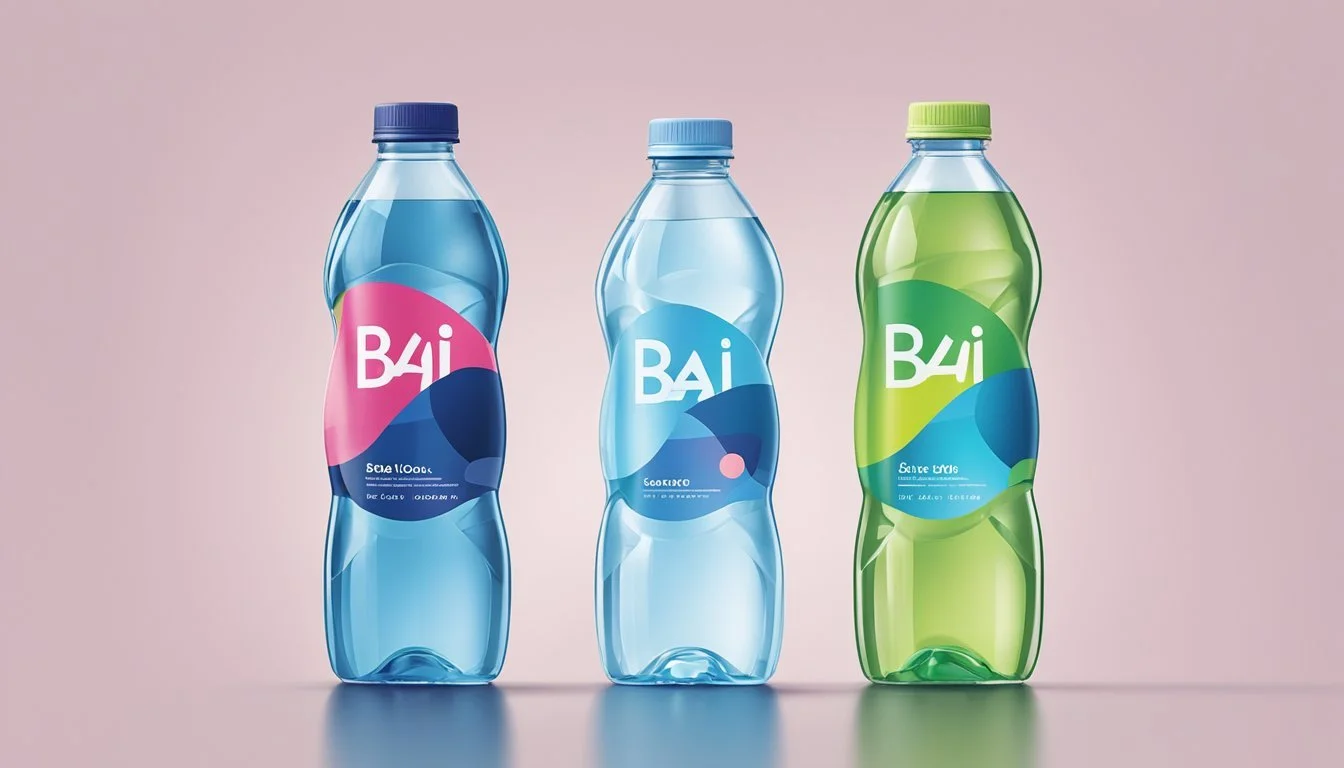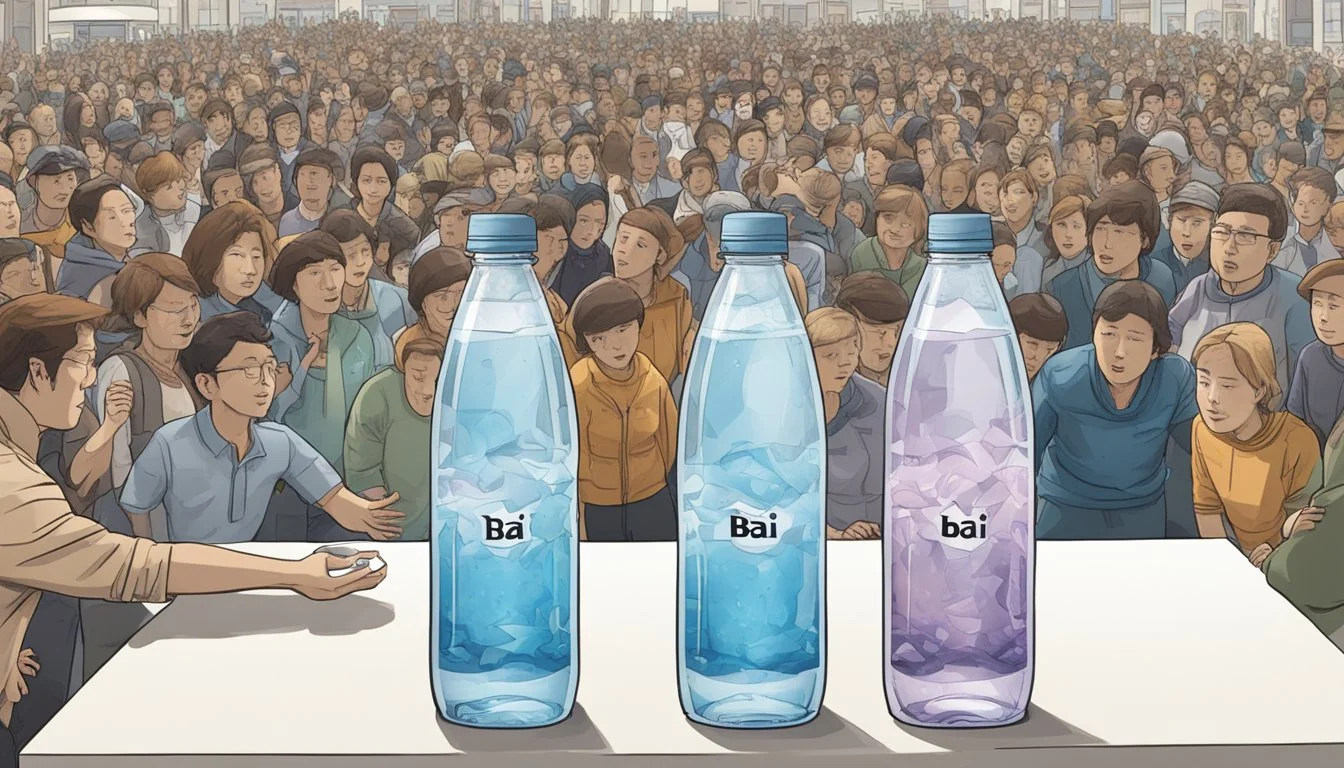Bai vs. Action
Comparing Two Popular Bottled Waters
When it comes to choosing between Bai and Action bottled water, understanding the key differences can help make a more informed decision. Bai water boasts a distinctive appeal by incorporating natural sweetness from coffee fruit extract and having low calorie and sugar content. It is prominently marketed for its antioxidant benefits, attributed to ingredients like selenium, and its unique flavors give it an edge in variety.
Action water, on the other hand, is celebrated for its premium hydration formula, often being favored by those seeking a high pH balance and pure taste. It emphasizes purity and mineral content without the added flavors found in Bai, catering to those who prioritize simplicity and hydration efficacy.
For those who are health-conscious and enjoy flavored, antioxidant-rich options, Bai may be the better choice. Conversely, individuals seeking straightforward, high-quality hydration might find Action water more aligned with their preferences. By examining the distinctive features of each brand, readers can decide which bottled water better fits their lifestyle needs.
Understanding Bottled Water
Bottled water comes in various types, each with its own characteristics, origins, and regulations to ensure safety and quality. This section will cover the history, types, and regulatory standards of bottled water.
History of Bottled Water
Bottled water has a long history dating back to the early 17th century. The practice began in the United Kingdom, where water was bottled for health purposes.
The commercialization of bottled water saw significant growth in the 20th century. Brands like Perrier popularized naturally carbonated mineral water sourced from springs affected by volcanic activity. Today, bottled water has become a global industry, with a focus on providing safe and convenient hydration.
Types of Bottled Water
Bottled water can be categorized into several types based on its source and treatment methods:
Spring Water: Sourced from natural springs, it often contains natural minerals.
Mineral Water: Rich in minerals, it maintains a specific mineral content regulated by standards.
Purified Water: Treated to remove contaminants via processes like reverse osmosis or distillation.
Sparkling Water: Contains natural or added carbonation.
Each type offers unique benefits and caters to different consumer preferences.
Regulations and Purity Standards
Regulations ensure bottled water is safe for consumption. In the U.S., the FDA oversees bottled water standards, mandating proper labeling and purity. These standards are similar to EPA regulations for tap water, ensuring both sources meet safety criteria.
Bottled water must comply with limits on contaminants such as bacteria, chemicals, and heavy metals. The pH balance and mineral content are often monitored to maintain quality. Brands also employ various filtration methods to enhance purity and taste, addressing consumer concerns about water quality.
Recycling and environmental impact are critical considerations, with initiatives aimed at reducing plastic waste and promoting sustainable packaging.
Brand Profiles
This section provides a detailed comparison of Bai and Action Water, discussing their unique features and brand highlights.
Bai Brands Overview
Bai offers a distinctive collection of flavored water beverages infused with antioxidants. Bai drinks are known for their low-calorie content—each bottle contains only 10 calories. The beverages are free from artificial sweeteners and added sugars, using natural sweeteners like stevia instead.
Notable Features:
Antioxidant Infusion: Extracts from coffee fruit and tea are used.
Flavor Variety: Numerous flavors catering to various tastes.
Health Benefits: Gluten-free, low in sugar.
Bai's branding emphasizes health-conscious consumers looking for more than just hydration. Their wide accessibility in stores and strong consumer reviews highlight the brand's growing popularity.
Action Water - Brand Insights
Action Water focuses on delivering pure hydration without additional ingredients. This brand prides itself on offering water sourced from natural springs, similar to well-known brands like Evian and Fiji.
Key Attributes:
Purity: 100% natural spring water.
Environmental Considerations: Efforts toward sustainable packaging.
Accessibility: Widely available in major retail stores.
Action Water does not offer flavors or added nutrients but instead provides simple and clean hydration. This appeals to consumers who prefer unflavored, natural water sources. The brand’s commitment to sustainability further enhances its appeal amongst eco-conscious buyers.
Nutritional and Health Analysis
In comparing Bai and Action bottled waters, several key factors must be considered to determine their nutritional value and potential health benefits. This analysis will focus on the ingredients used in each product and the health claims associated with their consumption.
Evaluating Ingredients
Bai is known for its antioxidant infusion drinks, which contain natural flavors and sweeteners. Each bottle has about 1 gram of sugar, making it a low-calorie option. The primary ingredients include coffee fruit extract and tea extract, both rich in antioxidants like polyphenols. This positions Bai as an attractive choice for health-conscious consumers.
Action water is marketed as a zero-calorie, electrolyte-enhanced beverage. It typically includes electrolytes such as sodium, potassium, and magnesium. Additionally, Action avoids artificial sweeteners and uses natural ingredients to flavor the water. This combination aims to provide optimal hydration support without added calories.
Health Claims and Benefits
Bai emphasizes its antioxidant properties, which can help neutralize free radicals in the body. This may support overall wellness and potentially lower the risk of chronic diseases like cancer and heart disease. The inclusion of caffeine from tea extract can offer a gentle energy boost, while the product’s low-calorie nature makes it favorable for those monitoring their calorie intake.
Action's primary health claim revolves around superior hydration due to the added electrolytes. These minerals are crucial for maintaining fluid balance and proper cellular function. The lack of calories, artificial sweeteners, and preservatives makes it an excellent choice for those seeking a pure, hydrating beverage without unnecessary additives. Vitamin C and other vitamins might also be included, offering additional nutritional benefits.
Both products cater to different needs: Bai focuses on antioxidant infusion and natural flavors, while Action highlights electrolyte replenishment and being calorie-free.
Taste and Flavor Comparison
Bai and Action offer unique flavor profiles designed to cater to different taste preferences. Key differences can be found in their ingredient composition, natural flavors, and consumer feedback.
Flavor Profile Assessment
Bai's flavored waters are infused with antioxidants and fruit extracts. Each variety offers distinct flavors, such as blueberry, cherry, and watermelon. These drinks aim to provide not only hydration but also subtle, refreshing taste experiences. The coffee fruit extract used in Bai's formulation adds an interesting twist, appealing to health-conscious consumers looking for innovation in their beverage choices.
Action, on the other hand, focuses on delivering pure, crisp taste with minimal added ingredients. While not as diversified in flavors as Bai, Action's natural mineral composition provides a clean and straightforward drinking experience. Ingredients such as electrolytes contribute to a balanced taste, making it a popular choice for those who prioritize simplicity and purity in their bottled water.
Consumer Preferences and Perceptions
Consumer feedback reveals much about the preferences and perceptions surrounding Bai and Action. Many consumers appreciate Bai's unique flavors and the inclusion of antioxidants. The variety in fruit flavors like blueberry, cherry, and watermelon adds to its appeal. Health-conscious individuals often highlight the added benefits of vitamins and antioxidants found in Bai.
In contrast, Action is favored for its straightforward, unflavored taste. Consumers who prefer a natural and clean water experience without added flavors tend to gravitate towards Action. Its simplicity and focus on hydration without additives cater to those who seek purity and a refreshing drinking experience. This divide in consumer preference highlights the distinct market segments that Bai and Action each serve effectively.
Environmental and Sustainability Considerations
When comparing Bai and Action bottled waters, evaluating the environmental and sustainability aspects is essential. This involves assessing packaging, recycling impacts, water sourcing, and resource management.
Packaging and Recycling Impacts
Bai water uses plastic bottles, which contributes to environmental concerns due to the challenges in recycling and the prevalence of plastic waste. Plastic, while recyclable, often does not get processed adequately, leading to environmental pollution. PET, or polyethylene terephthalate, used in Bai bottles, is theoretically recyclable but requires efficient processing to minimize landfill accumulation.
Action water, depending on the specific brand variant, might use plastic or glass bottles. Glass bottles have a higher environmental footprint in production but offer high recyclability, often being reused multiple times before disposal. The design of packaging plays a critical role in determining the sustainability of these products. Brands focusing on eco-friendly packaging need to balance between reducing the materials used and ensuring the longevity and safety of the bottle's contents.
Water Sourcing and Resource Management
The water source is another crucial factor in environmental sustainability. Bai sources water that is infused with antioxidants and flavors, which requires additional processing. This can increase the environmental footprint, considering the energy and resources needed for flavoring and preservation. The natural water source for such products is essential for maintaining sustainability practices.
Action water, emphasizing pure, natural water sources, may have an edge in this area. Sustainable water sourcing involves ensuring that the extraction does not deplete local water tables or harm surrounding ecosystems. Efficient resource management practices, such as water conservation and minimizing environmental disruption, are vital in assessing the sustainability of bottled water. Eco-conscious brands strive to manage their water sources responsibly to maintain long-term ecological balance.
Market Presence and Consumer Outreach
Bai and Action both adopt different strategies to capture market share and engage with consumers. Examining their methods will highlight how each brand establishes itself and maintains dedication from its customer base.
Marketing Strategies
Bai leverages its unique flavored water options and health benefits in its marketing campaigns. The focus on antioxidants from coffee fruit extract helps Bai stand out. They employ digital marketing, social media presence, and partnerships with health influencers to amplify their message.
Action focuses on its pure water source and high-quality standards. Highlighting the absence of additives and commitment to transparency resonates with health-conscious consumers. The brand utilizes traditional advertising, in-store promotions, and collaborations with fitness communities to strengthen its visibility.
Consumer Engagement and Brand Loyalty
Bai builds strong engagement through interactive social media campaigns and user-generated content. The brand frequently encourages customers to share their experiences using specific hashtags, fostering a sense of community. Bai’s flavored water and low-calorie count contribute to a devoted customer base that values both taste and health.
Action emphasizes direct communication with customers via loyalty programs and feedback initiatives. They analyze consumer reviews and testimonials to refine their products. This data-driven approach enhances customer satisfaction. By maintaining open lines of communication and consistently delivering on quality promises, Action nurtures lasting brand loyalty.
Conclusion
Bai water comes in various flavored options with low calorie counts and added antioxidants. This makes it appealing to those seeking a tasty and health-conscious beverage. Each bottle contains minimal sugar, which is derived from natural sources.
On the other hand, Action water focuses on ultra-purification and promises high quality without additional flavors or additives. It is purely intended for hydration without the frills.
Hydration:
Bai: Provides hydration with added flavors and antioxidants, suitable for anyone aiming to maintain hydration with added benefits.
Action: Offers pure hydration, ideal for consumers preferring an unflavored and straightforward option.
Health Benefits:
Bai: Contains antioxidants from sources like coffee fruit extract and tea extract, with low calories and no artificial sweeteners.
Action: Focuses on providing clean, ultra-purified water without any enhancements.
Environmental Impact:
Both brands aim to be environmentally conscious but have different approaches. Bai offers eco-friendly packaging and source ingredients. Action emphasizes reducing plastic usage and uses recyclable materials for its bottles.
In conclusion, choosing between Bai and Action depends on personal preferences. Those seeking hydration with added flavors and health benefits might prefer Bai, while those who prioritize pure, clean water may lean towards Action.




